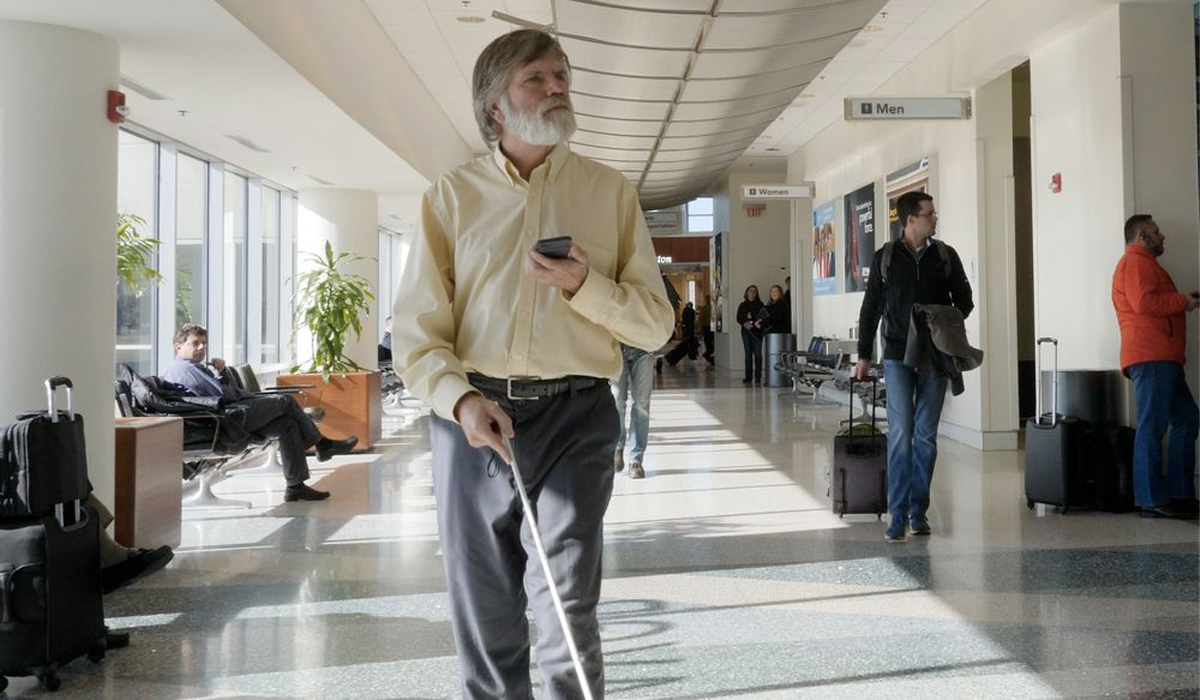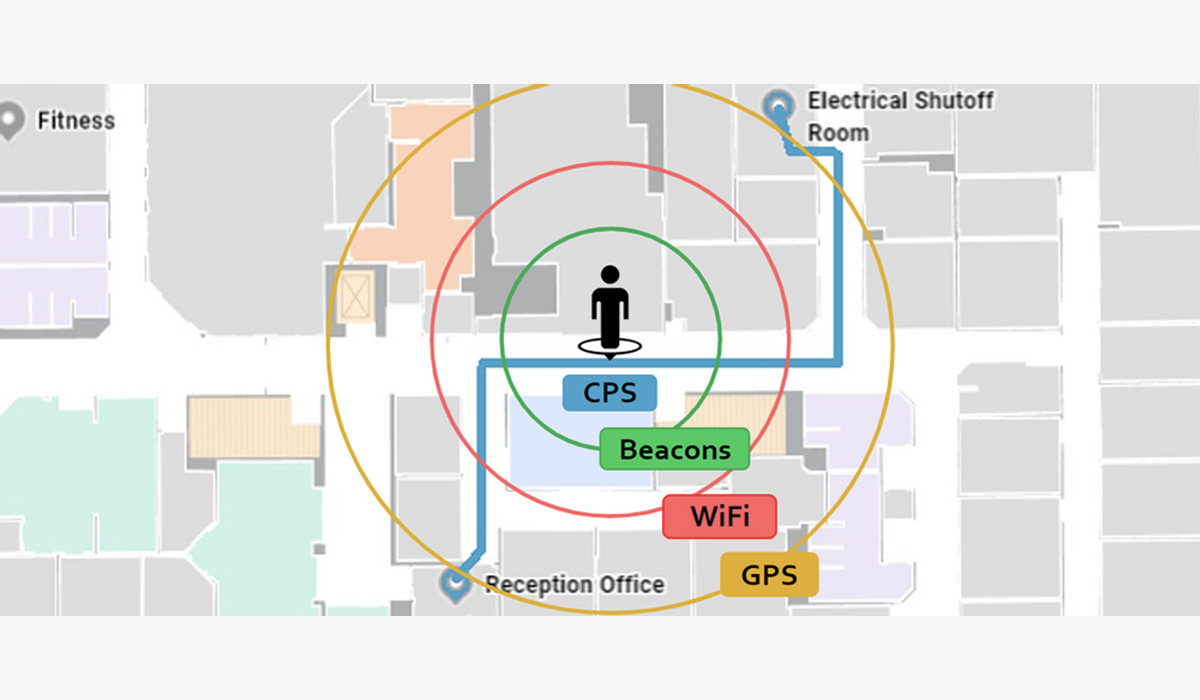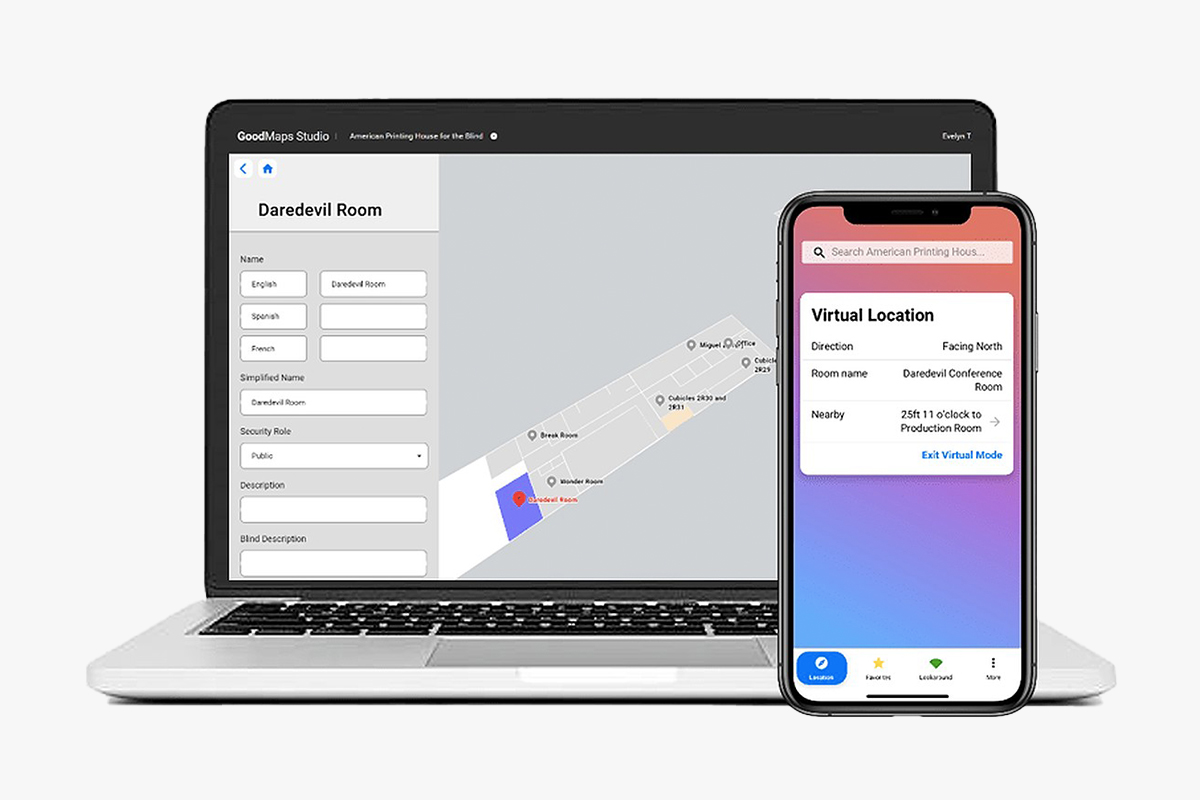GoodMaps Explore identifies a critical, but often overlooked necessity in navigation technology: mapping indoor spaces. Every inch of the planet’s outdoor surface has been digitally mapped, and Google has codified most of it with LiDAR mapping and GPS. You’ve seen the Google cars driving around with the periscope? GoodMaps fits LiDAR backpacks on human operators to map indoor spaces.
The tech is revolutionary for vision-impaired populations or anyone who finds themselves in unfamiliar territory. Surrounded by signs in languages you don’t understand? Fire up GoodMaps Explore to pull back the linguistic curtain and navigate your foreign situation. The app, available on the App Store and Google Play, continues to evolve since its recent debut.

Enhanced Indoor Navigation: GoodMaps Tech and Concept
GoodMaps starts with boots on the ground — literally. Then, using a LiDAR backpack, a GoodMaps employee walks the space to be mapped (museum, airport, mall, sidewalk crossing), and the pack collects data.
Digital imaging takes over from there, generating a model of the space that’s as accurate as possible. As soon as the map uploads to the GoodMaps Explore database, it’s accessible to any user. Smartphone camera-based positioning cuts down on abrasion and cost for the building host by eliminating the need for beacons or other devices.
Travel Tech
The user experience can help travelers as well as the visually impaired. By announcing upcoming points of interest, like emergency exits, restrooms, and intersections, the app helps blind users similarly to the way signs help sighted people. And anyone who’s ever been in a foreign city without being fluent in the local language can understand the app’s utility. Need a bathroom but don’t know if that door on the left might lead to some unknown portal? Cue GoodMaps.
GoodMaps Explore App Status
GoodMaps Explore App Status
As of this writing, the GoodMaps Explore user experience looks pretty rudimentary. It launched late last year and currently has 100+ downloads on Play Store. But it does promise capability once it gets humming, with a “Favorites” section for saving locations and “Lookaround” for exploring directionally, just by pointing your phone in any direction. In addition, choose-your-own-adventure types can use the “Getting Warmer” feature to make their own route to any specified location.
The main obstacle seems to be with available data. Based on my testing, I’d consider it in beta. Explore did accurately identify some locations around my neighborhood, but it also shunted me to Google Maps a lot. And it wasn’t always on point — I confirmed that a place called “Davy’s Delicatessen” on “Bologna Boulevard” does not, in fact, exist 828 feet from my office.
Winner, Winner
But you don’t win an Innovation award at CES (GoodMaps did in April 2021) for nothing, and the company promises to expand its reach throughout the year. Once the data catches up with the technology, the pioneering app stands to empower visually impaired populations dramatically.




